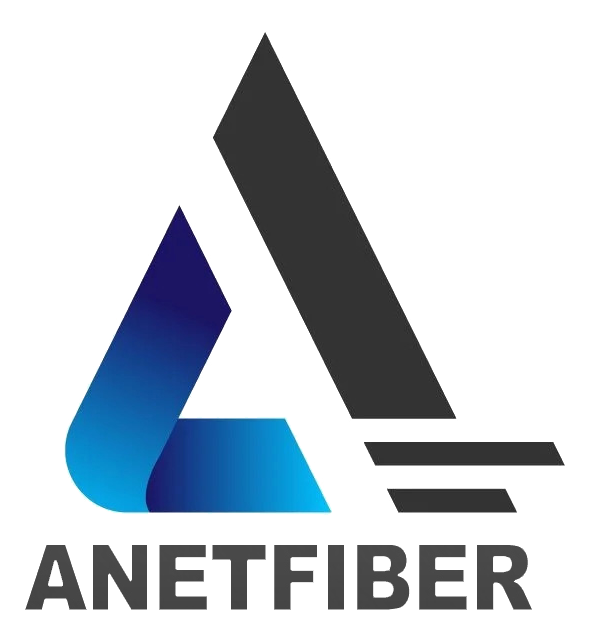Future Trends in Optical Fiber Cables: Exploring Advanced Materials and Industry Innovations

The Evolution of Optical Fiber Technology
The evolution of optical fiber technology has been marked by significant advancements, particularly in the development of advanced fiber optic materials. Initially, optical fibers were primarily composed of glass, which provided the foundation for modern fiber optic communication.
From Glass to Advanced Fiber Optic Materials
Understanding the Basics of Optical Fiber
Optical fibers are slender, flexible strands that transmit light signals over long distances with minimal loss of signal strength. This fundamental characteristic makes them indispensable in modern telecommunications and data transmission.
The Shift Towards More Durable and Efficient Materials
In recent years, there has been a notable shift towards the use of more durable and efficient materials in optical cable construction. Manufacturers have been exploring advanced polymers and composite materials that offer enhanced durability and signal transmission capabilities. These materials not only improve the overall performance of optical fibers but also contribute to their longevity and reliability.
Milestones in Optical Fiber Innovations
Key Historical Breakthroughs
Throughout history, there have been several key milestones in optical cable innovations, including the invention of low-loss optical fibers and the development of dense wavelength-division multiplexing (DWDM) technology. These breakthroughs have significantly expanded the capacity and efficiency of optical communication systems.
Recent Advances in Fiber Optic Technology
Recent years have witnessed remarkable advances in fiber optic technology, such as the introduction of bend-resistant fibers and hollow-core photonic bandgap fibers. These innovations have opened up new possibilities for high-speed data transmission and have paved the way for future trends in optical fiber technology.
Key Innovations in Fiber Optic Cables
The realm of optical fiber technology is witnessing a surge in key innovations, particularly in the domain of fiber optic cables. These advancements are reshaping the landscape of telecommunications and data transmission, paving the way for future trends in optical fiber technology.
High-speed Fiber Optic Cables and Their Impact
The Need for Speed in Data Transmission
In today's digital age, the demand for rapid data transmission has surged exponentially. This necessitates the development of high-speed fiber optic cables that can accommodate the ever-increasing volume of data being transmitted across networks. Whether it's streaming high-definition content or facilitating real-time communication, the need for speed is a driving force behind the evolution of fiber optic cables.
How High-speed Cables Are Changing the Game
The emergence of high-speed fiber optic cables has revolutionized various industries by enabling seamless connectivity and ultra-fast data transfer. From empowering cloud computing to enhancing virtual reality experiences, these advanced cables are catalyzing innovation across diverse sectors. Moreover, they play a pivotal role in supporting emerging technologies such as artificial intelligence and autonomous vehicles, where instantaneous data exchange is paramount.
Durability Enhancements in Fiber Optics
Facing the Challenges of Environmental Factors
One of the persistent challenges faced by traditional fiber optics is their susceptibility to environmental factors such as moisture and temperature fluctuations. These elements can compromise signal integrity and overall performance. As a result, there has been a concerted effort to enhance the durability of fiber optics to ensure reliable operation even in demanding environmental conditions.
Innovations in Making Fiber Optics More Resilient
Recent strides have been made in developing durability enhancements for fiber optics, including protective coatings and ruggedized designs that fortify them against external stressors. Additionally, advancements in material science have led to the creation of robust fibers capable of withstanding harsh environments without compromising signal quality. These innovations are instrumental in expanding the applicability of fiber optics across diverse settings, from undersea cabling to industrial automation.
The Role of Fiber Optics in Emerging Technologies
As the world hurtles towards an era of unprecedented technological advancement, the role of optical fiber in driving these changes cannot be overstated. Its seamless integration into emerging technologies such as IoT (Internet of Things) and 5G networks is poised to reshape connectivity and communication on a global scale.
Fiber Optic Cables in IoT (Internet of Things)
The Growing Demand for Connectivity
The proliferation of IoT devices across various domains, from smart homes to industrial automation, has fueled an insatiable demand for seamless connectivity. These devices rely on constant data exchange to function effectively, creating a pressing need for robust and high-speed communication infrastructure.
How Fiber Optics Support IoT Expansion
Optical fiber plays a pivotal role in meeting the escalating connectivity demands of IoT ecosystems. Its ability to transmit large volumes of data over long distances with minimal latency makes it an ideal medium for interconnecting myriad IoT devices. Moreover, the durability enhancements in fiber optics ensure reliable operation even in challenging environments, making them indispensable for supporting the diverse array of IoT applications.
Fiber Optic Cables in 5G Networks
The Synergy Between 5G and Fiber Optics
The impending rollout of 5G networks heralds a new era of ultra-fast and low-latency wireless communication. This revolutionary technology promises to underpin transformative applications such as autonomous vehicles, augmented reality, and telemedicine. At the heart of this technological leap lies the seamless integration between high-speed fiber optic cables and 5G wireless networks.
Preparing the Infrastructure for 5G Rollout
The deployment of 5G networks necessitates a robust and agile infrastructure capable of handling unprecedented data traffic. Fiber optic cables form the backbone of this infrastructure, providing the necessary bandwidth and reliability to support the dense network architecture required for 5G implementation. As such, extensive investments are being made to expand fiber optic networks in anticipation of the widespread adoption of 5G technology.
Looking Ahead: The Future of Fiber Optic Communication
As the demand for high-speed fiber optic cables continues to soar, the future of optical fiber communication is poised for remarkable advancements. The industry is on the brink of a new era characterized by unprecedented speeds and efficiency, driven by cutting-edge materials and technologies.
Next-generation Fiber Optics: What to Expect
The Push Towards Even Higher Speeds and Efficiency
The relentless pursuit of faster data transmission has propelled the development of next-generation fiber optics. Engineers and researchers are focused on pushing the boundaries of speed and efficiency, aiming to surpass current capabilities and meet the escalating demands for bandwidth-intensive applications. This drive towards higher speeds is fueled by the exponential growth in data consumption across various sectors, from cloud computing to immersive multimedia experiences.
Potential Materials and Technologies on the Horizon
Innovations in material science are anticipated to play a pivotal role in shaping the future landscape of optical fiber technology. Advanced polymers, nanomaterials, and metamaterials are being explored as potential candidates for enhancing signal transmission and durability. Furthermore, emerging technologies such as photonic integration and quantum communication hold promise for revolutionizing the fundamental principles of optical communication, paving the way for unparalleled performance and security.
Emerging Fiber Optic Technologies and Their Applications
Innovations That Could Revolutionize the Industry
The convergence of photonics, nanotechnology, and advanced signal processing is giving rise to groundbreaking innovations that have the potential to revolutionize the fiber optic industry. From ultra-compact photonic devices to dynamic reconfigurable optical networks, these advancements are poised to redefine how data is transmitted, processed, and distributed. Moreover, breakthroughs in integrated photonics are opening doors to novel applications in sensing, imaging, and quantum information processing, signaling a paradigm shift in optical fiber technology.
The Role of Fiber Optics in Future Communication Networks
Looking ahead, fiber optics will continue to underpin the foundation of future communication networks with their unparalleled capacity for high-speed data transmission over extended distances. As 5G networks become ubiquitous and IoT ecosystems proliferate, optical fiber will serve as the backbone that sustains seamless connectivity across diverse domains. Its reliability, scalability, and immunity to electromagnetic interference position it as an indispensable enabler of next-generation communication infrastructures.
Fiber Optic Cable Industry Trends and Predictions
The fiber optic cable industry is experiencing dynamic shifts driven by evolving technological landscapes and burgeoning connectivity demands. Understanding the current trends and anticipating future developments is crucial for stakeholders seeking to capitalize on emerging opportunities.
Current Trends Shaping the Fiber Optic Cable Industry
The Increasing Importance of Fiber Optics in Data Centers
Optical fiber has emerged as a cornerstone of modern data center infrastructure, underpinning the seamless transmission of vast volumes of data essential for cloud computing, big data analytics, and mission-critical applications. The unparalleled bandwidth and low latency offered by fiber optic cables are instrumental in meeting the escalating demands for high-speed interconnectivity within data centers, enabling efficient data processing and storage.
Global Expansion of Fiber Optic Networks
The global proliferation of fiber optic networks is reshaping communication paradigms across diverse regions. From urban metropolises to remote rural areas, the deployment of fiber optic infrastructure is bridging connectivity gaps and empowering communities with high-speed internet access. This expansion not only facilitates enhanced digital experiences but also catalyzes economic growth by fostering innovation and entrepreneurship in previously underserved areas.
Future Predictions for the Fiber Optic Cable Market
Potential Growth Areas and New Markets
The future trajectory of the fiber optic cable market points towards burgeoning opportunities in emerging sectors such as smart cities, edge computing, and advanced manufacturing. As these domains increasingly rely on robust communication backbones, there is a growing demand for tailored fiber optic solutions that can support diverse applications with varying bandwidth requirements. Moreover, the integration of fiber optics into 5G networks and IoT ecosystems presents fertile ground for market expansion and innovation.
Challenges and Opportunities Ahead
While the prospects for the fiber optic cable industry are promising, they are accompanied by inherent challenges that necessitate strategic foresight. The industry must navigate complexities related to regulatory frameworks, cybersecurity threats, and sustainable deployment practices. Furthermore, addressing cost-efficiency concerns while ensuring scalability poses a dual challenge that requires innovative solutions to drive sustainable growth.
See Also
Revolutionizing Data Transmission with 4 Innovative Fiber Optic Technologies
Comprehensive Case Study: Implementing Fiber Optic Solutions in Your Industry
A Comprehensive Guide to Understanding Fiber Optic Cables
Analyzing the Pros and Cons: Fiber Optic vs. Copper Cables
Revolutionizing Smart Cities: Fiber Optics vs. Traditional Networks


